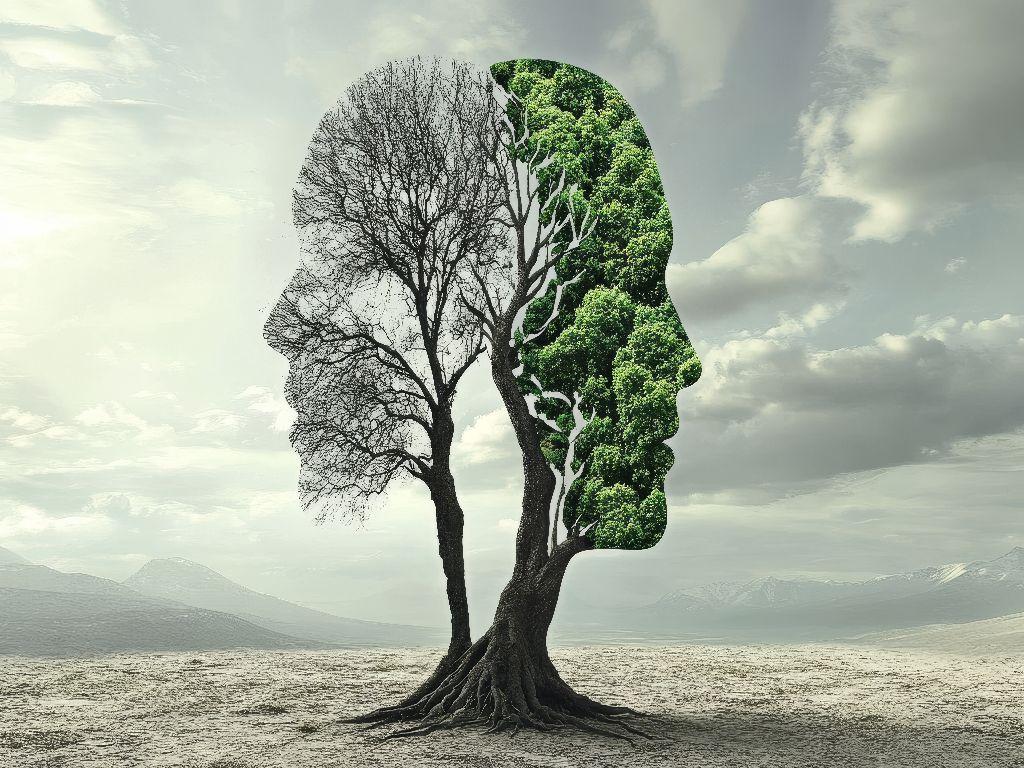Exploring the Depths of Anthroposophy: A Journey Through Its Principles and Impact
This blog post explores Anthroposophy, a philosophy founded by Rudolf Steiner that integrates spirituality with education and environmental stewardship. It highlights the core principles of Anthroposophy, emphasizing the holistic development of individuals through Waldorf education and biodynamic agriculture. The article discusses the philosophy's historical context, its impact on contemporary educational practices, and its relevance in addressing social and environmental challenges today. By fostering connections to oneself, others, and nature, Anthroposophy offers valuable insights for navigating modern life.
What if the key to understanding our existence lies in a philosophy that intertwines spirituality, education, and a profound respect for nature? In this exploration of Anthroposophy, we will journey through its origins, core principles, and the influential figures who shaped it, revealing how these ideas have transformed education and agriculture while resonating with contemporary challenges. By delving into the depths of Anthroposophy, you will uncover insights that not only enrich your understanding of human potential but also inspire a deeper connection to the world around you. Join us as we embark on this enlightening path together.
Understanding Anthroposophy
The roots of Anthroposophy can be traced back to the early 20th century. This philosophy emerged during a time of significant social, cultural, and scientific upheaval in Europe, where traditional belief systems were being challenged by modernity and the rapid advancements in various fields. At the forefront of this movement was Rudolf Steiner, an Austrian philosopher, social reformer, and esotericist, who sought to create a comprehensive understanding of humanity that integrated spiritual insights with practical applications. Steiner’s work was influenced by the philosophical currents of his time, including German idealism and theosophy, as well as the growing interest in spirituality that was characteristic of the era.
The Historical Context
The socio-cultural environment of the early 1900s played a crucial role in shaping Anthroposophy. The industrial revolution had transformed societies, bringing about both opportunities and challenges. People were beginning to question the mechanistic worldview that dominated scientific thought and were seeking deeper meanings in life. In this context, Steiner proposed a philosophy that viewed human beings not merely as products of their physical environment but as spiritual entities capable of growth and transformation. His lectures and writings during this period laid the foundation for what would later evolve into a comprehensive system of thought that encompasses education, agriculture, art, and social reform.
The Influence of Rudolf Steiner
Rudolf Steiner's vision for Anthroposophy extended beyond mere philosophical discourse; he aimed to create practical methodologies that would enable individuals to explore their spiritual nature and realize their potential. He emphasized the importance of developing a personal relationship with the spiritual world through inner work and self-reflection. This approach encourages individuals to engage with their own experiences and insights, fostering a sense of autonomy and responsibility in their spiritual journeys. Steiner's teachings also highlighted the interconnectedness of all life, advocating for a holistic view that recognizes the intrinsic value of nature and the environment.
Core Principles of Anthroposophy
At its heart, Anthroposophy emphasizes the spiritual nature of human beings. It posits that each individual possesses an inner essence that transcends physical existence. This perspective encourages a deep respect for oneself and others, fostering compassion and understanding in interpersonal relationships. Furthermore, Anthroposophy advocates for education as a means to cultivate not only intellectual capacities but also emotional and spiritual growth. Steiner believed that true education should nurture the whole child—mind, body, and spirit—allowing for a balanced development that prepares individuals to contribute positively to society.
Anthroposophy also places great importance on the interconnectedness of all life forms. This principle is evident in its approach to both education and agriculture, where holistic practices are employed to promote sustainability and well-being. By recognizing that human beings are part of a larger ecological system, Anthroposophy encourages practices that honor nature and foster a sense of stewardship towards the earth.
The Evolution of Anthroposophical Thought
As Anthroposophy developed over the years, it attracted a diverse group of followers who contributed to its evolution. Several pivotal figures have shaped the development of Anthroposophy beyond Rudolf Steiner. These individuals have expanded on his ideas and applied them in various fields such as education, agriculture, medicine, and art. Their contributions have not only enriched the philosophy itself but have also made it accessible to a broader audience.
Among these figures are those who have played significant roles in establishing Waldorf schools worldwide, promoting an educational model rooted in Anthroposophical principles. Others have advanced biodynamic agriculture practices, demonstrating how spiritual insights can inform sustainable farming methods. Each contributor has added layers to the understanding of Anthroposophy, ensuring its relevance in contemporary discussions about spirituality and social responsibility.
As we delve deeper into this exploration of Anthroposophy, we will uncover its profound impact on educational practices worldwide.
The Impact of Anthroposophy on Education
Anthroposophy has significantly influenced educational practices worldwide. Its principles have inspired innovative approaches to teaching and learning, fostering environments where students can thrive not only academically but also emotionally and spiritually. At the core of this educational philosophy is the belief in nurturing the whole child, which encompasses intellectual, emotional, and spiritual development. This holistic approach is particularly evident in the establishment of Waldorf education, a system founded on Anthroposophical principles that has garnered attention and admiration across various cultures.
The Waldorf Education Model
Waldorf education, developed by Rudolf Steiner in the early 20th century, is perhaps the most prominent application of Anthroposophical principles in the realm of education. The model emphasizes a curriculum that is responsive to the developmental stages of children, recognizing that each child learns differently and at their own pace. In Waldorf schools, the curriculum is designed to engage students through artistic expression, hands-on activities, and experiential learning. This multifaceted approach not only cultivates academic skills but also fosters creativity and critical thinking.
One of the distinguishing features of Waldorf education is its focus on storytelling and imaginative play, particularly in the early years. Teachers weave narratives that spark curiosity and encourage children to explore their surroundings. This method nurtures a sense of wonder about the world, allowing students to connect with their learning on a deeper level. Furthermore, by integrating arts into every subject area—from music and painting to drama and movement—Waldorf education aims to develop well-rounded individuals who appreciate beauty and creativity.
The Role of Teachers in Waldorf Schools
In Waldorf schools, teachers are viewed as facilitators of learning rather than mere transmitters of knowledge. This perspective aligns with Anthroposophical beliefs about the teacher-student relationship, where educators are encouraged to cultivate genuine connections with their students. Teachers often remain with the same class for several years, allowing them to develop a profound understanding of each child's unique strengths and challenges. This continuity fosters trust and a sense of security within the classroom environment.
Moreover, teachers in Waldorf settings are trained not only in pedagogical methods but also in self-development practices that align with Anthroposophical principles. They engage in ongoing personal growth through study and reflection, which enhances their ability to guide students effectively. This commitment to personal development ensures that educators embody the values they wish to instill in their students, creating a harmonious learning atmosphere.
The Impact on Child Development
The influence of Anthroposophy on education extends beyond academic achievement; it profoundly affects child development as well. By prioritizing emotional intelligence alongside intellectual growth, Waldorf education aims to foster resilience, empathy, and social responsibility in students. Children are encouraged to express their feelings and thoughts openly, promoting healthy emotional development and interpersonal skills.
Additionally, the emphasis on nature in Waldorf education aligns with Anthroposophical views on environmental stewardship. Outdoor activities and nature-based learning experiences are integral components of the curriculum. Students engage with their natural surroundings through gardening, outdoor play, and seasonal festivals that celebrate the cycles of nature. This connection to the environment instills a sense of respect for all living beings and encourages sustainable practices from an early age.
Research has shown that students educated within the Waldorf framework tend to exhibit higher levels of creativity and critical thinking skills compared to their peers in traditional educational settings. By encouraging independent thought and problem-solving abilities, Waldorf education equips students with tools necessary for navigating an increasingly complex world.
Global Reach and Adaptation
The principles of Anthroposophy have transcended geographical boundaries through the widespread establishment of Waldorf schools around the globe. Today, there are thousands of Waldorf institutions in various countries, each adapting Steiner's teachings to fit local cultural contexts while maintaining core Anthroposophical values. This adaptability speaks to the universal appeal of Waldorf education as it resonates with diverse communities seeking holistic approaches to learning.
In addition to primary and secondary schools, Anthroposophy's influence can be seen in early childhood education initiatives that prioritize play-based learning environments. Kindergartens inspired by Waldorf principles provide nurturing spaces where young children can explore their creativity while developing foundational skills necessary for future academic success.
As we explore further into the impact of Anthroposophy beyond educational practices, we will delve into its significant contributions to agriculture—particularly through biodynamic farming methods that reflect a deep respect for nature and holistic stewardship.
Anthroposophy in Agriculture
The agricultural practices inspired by Anthroposophy reflect a deep respect for nature. At the core of this approach lies biodynamic farming, a method that integrates spiritual insights with practical agricultural techniques. Developed by Rudolf Steiner in the early 20th century, biodynamic agriculture is not merely an alternative farming method; it represents a holistic framework that seeks to harmonize the farm's ecosystem with cosmic and earthly rhythms. This philosophy emphasizes the interconnectedness of all living organisms, urging farmers to cultivate their land with an understanding of its inherent vitality and potential.
The Principles of Biodynamic Farming
Biodynamic farming operates on several foundational principles that distinguish it from conventional agricultural practices. Central to this philosophy is the belief that a farm is a self-sustaining organism. Farmers are encouraged to observe and nurture the natural cycles of their land, treating soil, plants, animals, and humans as integral components of a unified whole. This perspective fosters a deep sense of responsibility towards the environment, promoting practices that enhance soil fertility, biodiversity, and ecological balance.
One of the unique aspects of biodynamic agriculture is its emphasis on organic composting and the use of specific preparations made from natural materials. These preparations are designed to stimulate microbial activity in the soil, enhancing its health and fertility. Farmers apply these composts at particular times aligned with lunar phases and astrological events, reflecting the belief that cosmic forces influence agricultural success. Such practices encourage a more profound connection between farmers and their land, reinforcing the idea that agriculture is not just a means of production but a spiritual practice.
Biodiversity and Ecological Health
Biodynamic farming places a strong emphasis on biodiversity as a critical component of ecological health. By cultivating a variety of crops and integrating livestock into farming systems, biodynamic practitioners create resilient ecosystems capable of sustaining themselves over time. This diversity helps to prevent disease outbreaks and pest infestations while promoting soil health through crop rotation and companion planting.
Moreover, biodynamic farms often incorporate natural pest management strategies that rely on ecological principles rather than synthetic chemicals. Farmers utilize beneficial insects, crop rotation, and intercropping to manage pests effectively while minimizing harm to the environment. This approach not only enhances biodiversity but also contributes to healthier food production, aligning with the growing consumer demand for sustainably sourced products.
The Impact on Food Quality and Community
The impact of biodynamic farming extends beyond environmental benefits; it also influences food quality and community well-being. Research has shown that biodynamically grown produce often exhibits higher nutritional value compared to conventionally grown counterparts. This enhancement arises from the focus on soil health and biodiversity, which contribute to more nutrient-rich crops.
Furthermore, biodynamic farms often engage in direct relationships with consumers through community-supported agriculture (CSA) programs and local markets. These initiatives foster connections between farmers and consumers, encouraging transparency in food production and promoting awareness about sustainable practices. By cultivating community ties, biodynamic agriculture nurtures social responsibility and encourages collective efforts toward environmental stewardship.
Challenges and Future Directions
While biodynamic agriculture presents numerous advantages, it faces challenges in gaining widespread acceptance within the broader agricultural community. Misconceptions about its spiritual aspects may hinder some farmers from embracing biodynamic practices fully. Additionally, transitioning from conventional methods to biodynamic farming can require significant time and effort, making it daunting for many producers.
Nevertheless, as global awareness of environmental issues grows, there is increasing interest in sustainable agricultural methods like biodynamics. Educational initiatives aimed at informing farmers about these practices are essential for fostering a greater understanding of their benefits. As more individuals seek holistic approaches to food production that align with their values, the principles of Anthroposophy will likely continue to resonate within agricultural circles.
As we transition from exploring the impact of Anthroposophy on agriculture, we will delve into how its principles manifest in art and culture—an area where creativity flourishes as an expression of spiritual ideals.
The Role of Art and Culture in Anthroposophy
Art plays a vital role in expressing Anthroposophical ideals. It serves as a medium through which individuals can explore their spiritual nature and connect with the world around them. In the framework of Anthroposophy, art is not merely a form of entertainment or aesthetic pleasure; it is seen as a vital component of human development that fosters creativity, emotional expression, and social cohesion. This perspective emphasizes the importance of integrating artistic endeavors into various aspects of life, including education, community activities, and personal growth.
The Importance of Artistic Expression
Artistic expression within the context of Anthroposophy is rooted in the belief that creativity is an essential aspect of being human. Rudolf Steiner asserted that engaging with art allows individuals to tap into their spiritual essence and develop a deeper understanding of themselves and their place in the universe. This connection between art and spirituality encourages individuals to explore their inner worlds, leading to personal transformation and growth.
In Waldorf education, for example, art is woven throughout the curriculum as a means to enhance learning and foster holistic development. Students engage in various artistic activities such as painting, drawing, music, and drama, which not only cultivate their creative abilities but also help them develop emotional intelligence and social skills. By integrating art into education, students learn to express their thoughts and feelings in constructive ways while appreciating the beauty and complexity of life.
The Role of Music in Anthroposophy
Music holds a particularly significant place within Anthroposophical practice. It is viewed as a universal language that transcends cultural boundaries and connects individuals on a deeper level. Steiner believed that music could facilitate spiritual experiences and enhance one’s ability to perceive the world more profoundly. In Waldorf schools, music education is an integral part of the curriculum, where children are encouraged to sing, play instruments, and participate in musical performances.
The approach to music in Anthroposophy emphasizes not only technical skill but also emotional connection and expression. Students learn to appreciate the emotional qualities of different musical styles and genres, fostering a sense of empathy and understanding for diverse cultural expressions. This engagement with music cultivates a spirit of collaboration and community, as students often participate in group performances that strengthen social bonds.
Visual Arts as a Medium for Spiritual Exploration
Visual arts are another crucial aspect of Anthroposophy that facilitates spiritual exploration. Through painting, sculpture, and other forms of visual expression, individuals can communicate complex ideas and emotions that may be difficult to articulate through words alone. The act of creating art becomes a meditative practice that encourages introspection and self-discovery.
In Waldorf education, students are introduced to various artistic techniques that allow them to experiment with colors, shapes, and materials. This hands-on approach not only nurtures creativity but also fosters critical thinking skills as students learn to make choices about their artistic expressions. By engaging with visual arts, children develop an appreciation for beauty while also gaining insights into their own inner lives.
Theater as a Reflection of Human Experience
Theater also plays an essential role within the Anthroposophical framework. It serves as a powerful medium for exploring human experiences and emotions through storytelling. Steiner believed that drama could help individuals understand themselves better by reflecting on their own lives through the characters they portray. In this way, theater becomes a tool for personal growth and social awareness.
In Waldorf schools, students often participate in theatrical productions that involve collaborative storytelling, character development, and performance skills. These activities encourage teamwork and communication while allowing students to delve into the complexities of human relationships and societal issues. By embodying different roles on stage, students gain valuable insights into empathy and compassion.
Cultural Festivals and Community Building
Artistic practices in Anthroposophy extend beyond individual expression; they also play a significant role in fostering community connections. Cultural festivals rooted in Anthroposophical principles celebrate seasonal changes, cultural diversity, and shared human experiences. These events provide opportunities for individuals to come together in creative expressions of joy, gratitude, and reflection.
Such festivals often include music performances, art exhibitions, theatrical presentations, and communal activities that promote social interaction among participants. By engaging with one another through artistic endeavors, communities can strengthen their bonds while celebrating their unique cultural identities.
As we continue our exploration of Anthroposophy's influence on contemporary society, we will examine its relevance today—especially how its principles address pressing challenges related to environmental sustainability and holistic health approaches.
Contemporary Relevance of Anthroposophy
In today's world, the principles of Anthroposophy remain relevant and impactful. As we navigate an era marked by rapid technological advancements, environmental crises, and a growing sense of disconnection from nature and each other, the insights offered by this philosophy provide a guiding framework for addressing contemporary challenges. At its core, Anthroposophy emphasizes the spiritual dimensions of human existence, urging individuals to cultivate a deeper connection with themselves, their communities, and the natural world. This holistic approach resonates with those seeking meaning in an increasingly complex society.
One of the most pressing issues of our time is environmental sustainability. The ecological challenges we face—climate change, biodiversity loss, and pollution—demand a reevaluation of our relationship with the earth. Anthroposophical principles advocate for a harmonious coexistence with nature, as seen in biodynamic agriculture practices. These methods not only promote sustainable farming but also encourage a profound respect for the land and its ecosystems. By recognizing the interconnectedness of all life forms, individuals are inspired to adopt practices that support ecological balance and regeneration. This perspective aligns with growing movements focused on sustainability, where holistic approaches are increasingly valued in both personal and community contexts.
Moreover, the emphasis on social responsibility within Anthroposophy encourages individuals to engage actively in their communities. The philosophy promotes initiatives that foster collaboration and inclusivity, addressing social inequities and enhancing collective well-being. In a time when polarization is prevalent, Anthroposophy’s call for empathy and understanding serves as a reminder of our shared humanity. By fostering connections through art, education, and community-building activities rooted in Anthroposophical ideals, individuals can contribute to creating more compassionate societies.
The realm of education also finds renewed significance through Anthroposophical teachings. As traditional educational systems often prioritize standardized testing over holistic development, many are seeking alternatives that nurture creativity, critical thinking, and emotional intelligence—qualities essential for thriving in today’s world. Waldorf education exemplifies this shift by focusing on the whole child: mind, body, and spirit. It equips students not only with academic skills but also with the ability to navigate life’s complexities with resilience and compassion. In this way, Anthroposophy serves as a beacon for those advocating for educational reform that prioritizes human potential over mere academic achievement.
Additionally, mental and physical health practices influenced by Anthroposophy are gaining traction in contemporary wellness movements. The integration of spiritual awareness into holistic health approaches emphasizes the importance of treating individuals as whole beings rather than merely addressing symptoms. By fostering self-awareness and encouraging practices such as mindfulness and meditation, individuals can cultivate a deeper understanding of their own health journeys. This perspective aligns with a growing recognition that true wellness encompasses not just physical health but also emotional and spiritual well-being.
In summary, Anthroposophy offers profound insights that resonate deeply with current societal needs. Its principles encourage individuals to seek meaningful connections with themselves, others, and the environment. By embracing these teachings, we can foster more sustainable practices in agriculture, promote holistic education models that nurture creativity and empathy, and cultivate health approaches that honor the spiritual dimensions of human existence. As we continue to explore these themes further in our final section, it becomes evident that the relevance of Anthroposophy extends far beyond its historical roots; it provides a vital framework for navigating the complexities of modern life with grace and purpose.
Conclusion
As we draw our exploration of this multifaceted philosophy to a close, it becomes increasingly clear that the teachings of Anthroposophy offer a rich tapestry of insights that can profoundly enhance our understanding of human existence and our relationship with the world. This philosophy, rooted in the vision of Rudolf Steiner, invites us to recognize the spiritual dimensions of life and encourages a holistic approach that encompasses education, agriculture, art, and community engagement. Through our journey, we have uncovered how Anthroposophy’s core principles emphasize the interconnectedness of all life forms, urging us to cultivate a deep respect for nature while fostering personal and social responsibility. The impact of Anthroposophy on education, particularly through the Waldorf model, illustrates its commitment to nurturing the whole child—mind, body, and spirit—allowing individuals to thrive not only academically but also emotionally and socially. Furthermore, the biodynamic farming practices inspired by this philosophy reflect a profound respect for ecological systems, promoting sustainable agriculture that honors both the earth and its inhabitants. In exploring the role of art and culture within this framework, we see how creative expression serves as a vital means for personal growth and community building, fostering connections that transcend cultural boundaries. As we navigate contemporary challenges such as environmental sustainability and social inequity, the relevance of Anthroposophical principles becomes even more pronounced. By embracing these teachings, we can cultivate meaningful connections with ourselves, each other, and our environment—creating a more compassionate and just world. Therefore, whether you are drawn to its educational practices, agricultural methods, or artistic expressions, delving deeper into Anthroposophy may inspire you to engage with life in a more profound way. We invite you to continue this journey of exploration and reflection, considering how these principles can enrich your own life and contribute positively to the wider community and the planet.
What is anthroposophy in simple terms?
Anthroposophy is a spiritual philosophy founded by Rudolf Steiner in the early 20th century. It seeks to understand the spiritual world and its connection to human life. In simple terms, it promotes the idea that by developing our inner capacities and understanding our spiritual nature, we can improve ourselves and the world around us.
What are the beliefs of anthroposophy?
The beliefs of anthroposophy encompass a wide range of ideas, but central to them is the belief in the existence of a spiritual reality beyond the physical world. Anthroposophists believe that human beings have the potential for spiritual development and that this can lead to greater insight into life, morality, and the universe. They emphasize the importance of individual experience and personal growth.
What is the anthroposophy approach?
The anthroposophic approach is holistic, integrating spiritual, artistic, and scientific perspectives. It encourages individuals to explore their own experiences and insights while engaging with the world around them. This approach is often applied in various fields such as education (Waldorf schools), agriculture (biodynamic farming), and medicine (anthroposophic medicine), aiming to foster a deeper understanding of life and promote well-being.
What is the anthroposophic lifestyle?
The anthroposophic lifestyle emphasizes living in harmony with nature and nurturing one’s spiritual development. This includes practices such as mindful eating, engaging in creative arts, and participating in community activities. It encourages individuals to cultivate a deeper awareness of their surroundings and to make choices that reflect their understanding of interconnectedness with all living beings.






